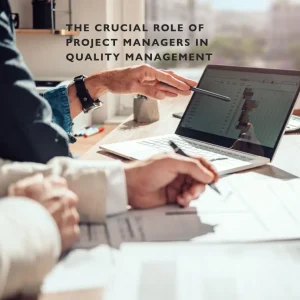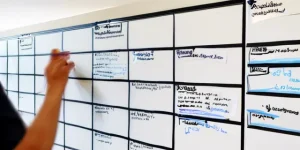Introduction to Mobile Project Management
In today’s fast-paced business environment, the concept of mobile project management (PM) has gained significant traction, reshaping how organizations approach project execution and collaboration. This section will explore the definition of mobile PM, the technological advancements that have facilitated its rise, and the critical need for organizations to adapt to this evolving culture.
Definition of Mobile Project Management
Mobile project management refers to the use of mobile devices and applications to manage projects, allowing team members to access project information, communicate, and collaborate from virtually anywhere. This approach enables real-time updates and decision-making, which is essential in a world where agility and responsiveness are paramount. The rise in mobile PM can be attributed to the increasing reliance on smartphones and tablets, which have become integral tools for professionals across various industries.
Overview of Technological Advancements Enabling Mobile PM
Several technological advancements have played a pivotal role in the rise of mobile project management:
Cloud Computing: The advent of cloud-based project management tools allows teams to store and access project data from any location, ensuring that all members have the most up-to-date information at their fingertips.
Mobile Applications: A plethora of mobile applications designed specifically for project management has emerged, offering features such as task tracking, time management, and team collaboration, all optimized for mobile use.
Communication Tools: Instant messaging and video conferencing applications have transformed how teams communicate, enabling seamless interaction regardless of geographical barriers.
These advancements not only enhance productivity but also foster a more collaborative work environment, essential for successful project outcomes.
Importance of Adapting to a Mobile PM Culture
As organizations navigate the complexities of modern business, adapting to a mobile project management culture is no longer optional; it is a necessity. The benefits of embracing mobile PM include:
Increased Flexibility: Team members can work from various locations, accommodating diverse work styles and schedules, which can lead to higher job satisfaction and retention rates.
Enhanced Collaboration: Mobile PM tools facilitate real-time communication and collaboration, breaking down silos and promoting a more integrated approach to project management.
Improved Responsiveness: In a fast-paced business landscape, the ability to make quick decisions and respond to changes is crucial. Mobile PM empowers teams to act swiftly, ensuring that projects remain on track.
Understanding the Cultural Shift Towards Mobile PM
The shift towards mobile project management (PM) necessitates a significant cultural transformation within organizations. This section explores the traditional PM culture, its limitations, and the essential elements required to foster a mobile PM culture.
Traditional PM Culture and Its Limitations
Historically, project management has been characterized by rigid structures and hierarchical communication. Organizations primarily emphasized control and structure, often leading to a top-down approach where employees were viewed as mere cogs in the machine. This traditional model, prevalent since the 1970s, limited flexibility and responsiveness, making it challenging to adapt to the fast-paced demands of modern projects. The focus was predominantly on processes rather than the performance and capabilities of project teams, which stifled innovation and collaboration [9][8].
Key Elements of a Mobile PM Culture
To successfully transition to a mobile PM culture, organizations must embrace several key elements:
Flexibility: Mobile PM requires a culture that supports adaptability. Teams must be empowered to make decisions on the fly, respond to changes in real-time, and adjust project plans as necessary. This flexibility fosters a more dynamic work environment where team members can thrive.
Collaboration: A mobile PM culture emphasizes open communication and collaboration among team members, regardless of their physical location. Utilizing mobile tools and platforms enables seamless interaction, allowing teams to share ideas, provide feedback, and work together effectively. This collaborative spirit is essential for driving project success in a mobile context [12][14].
Innovation: Encouraging a culture of innovation is crucial for mobile PM. Organizations must create an environment where team members feel safe to experiment, take risks, and propose new ideas. This can be achieved by promoting a mindset that values creativity and supports continuous improvement, which is vital for adapting to the ever-changing project landscape [12].
Leadership’s Role in Fostering a Mobile PM Culture
The shift towards mobile project management (PM) is not just a trend but a necessity. Organizational leaders play a pivotal role in nurturing a culture that embraces mobile PM practices. Here are some key strategies for leaders to effectively foster a mobile-first mindset within their organizations:
1. Promote a Mobile-First Mindset
Lead by Example: Leaders should actively use mobile PM tools and demonstrate their benefits in daily operations. This sets a precedent and encourages team members to adopt similar practices.
Integrate Mobile Tools into Daily Workflows: Encourage the use of mobile applications for project tracking, communication, and collaboration. This integration helps normalize mobile PM and showcases its efficiency in managing tasks on the go [2][4].
Highlight Success Stories: Share case studies or examples of successful mobile PM implementations within the organization or industry. This can inspire teams to embrace mobile solutions and understand their potential impact on productivity and project outcomes [8].
2. Encourage Open Communication and Feedback
Establish Clear Communication Norms: Set expectations for how team members should communicate using mobile tools. Define preferred channels and response times to ensure clarity and efficiency [14].
Create a Judgment-Free Zone: Foster an environment where team members feel comfortable sharing their thoughts and concerns about mobile PM practices. This openness can lead to valuable feedback and continuous improvement [9][12].
Utilize Regular Check-Ins: Implement routine meetings or check-ins via mobile platforms to maintain engagement and ensure everyone is aligned on project goals. These sessions can serve as an open forum for discussing challenges and sharing insights [15].
3. Develop Training Programs Focused on Mobile PM Tools and Methodologies
Invest in Training and Development: Leaders should prioritize training programs that equip team members with the skills needed to effectively use mobile PM tools. This can include workshops, online courses, or mentorship programs [11].
Encourage Continuous Learning: Promote a culture of continuous improvement by encouraging employees to stay updated on the latest mobile PM methodologies and technologies. This can be facilitated through access to resources, webinars, and industry conferences [8].
Tailor Training to Team Needs: Recognize that different teams may have varying levels of familiarity with mobile tools. Customize training sessions to address specific needs and challenges faced by different groups within the organization [3].
By implementing these strategies, leaders can create a supportive environment that not only embraces mobile project management but also enhances overall organizational performance. The transition to a mobile PM culture requires commitment and proactive leadership, but the benefits of increased flexibility, improved communication, and enhanced productivity are well worth the effort.
Implementing Mobile PM Tools and Technologies
In today’s fast-paced business environment, the ability to manage projects on the go is becoming increasingly essential. As organizations embrace mobile project management (PM), it is crucial to create a culture that supports this shift. Below are key points to consider when selecting and implementing mobile PM tools and technologies.
Overview of Popular Mobile PM Tools
- Trello: Trello is a visual project management tool that uses boards, lists, and cards to help teams organize tasks and projects. Its mobile app allows users to update tasks, communicate with team members, and track progress from anywhere.
- Asana: Asana is designed for task management and team collaboration. Its mobile application enables users to create tasks, set deadlines, and monitor project timelines, ensuring that team members stay aligned regardless of their location.
- Slack: While primarily a communication tool, Slack integrates with various project management applications, making it a valuable asset for mobile PM. Its mobile app allows teams to communicate in real-time, share files, and receive project updates instantly.
Criteria for Evaluating Mobile PM Tools
When selecting mobile PM tools, organizations should consider the following criteria:
User-Friendliness: The tool should have an intuitive interface that is easy for team members to navigate, ensuring quick adoption and minimal training.
Integration Capabilities: Evaluate how well the tool integrates with existing systems and workflows. Seamless integration can enhance productivity and reduce disruptions.
Collaboration Features: Look for tools that facilitate communication and collaboration among team members, such as chat functions, file sharing, and real-time updates.
Customization Options: The ability to customize the tool to fit specific project needs and organizational workflows is essential for maximizing its effectiveness.
Security and Compliance: Ensure that the tool adheres to security standards and compliance regulations relevant to your industry, protecting sensitive project data.
Best Practices for Integrating Mobile Tools into Existing Workflows
- Conduct a Needs Assessment: Before implementing any mobile PM tool, assess the specific needs of your organization and project teams. This will help identify the most suitable tools and features.
- Provide Training and Support: Offer comprehensive training sessions to help team members become familiar with the new tools. Ongoing support is also crucial to address any challenges that may arise during the transition.
- Encourage Feedback: Create a feedback loop where team members can share their experiences with the mobile tools. This input can guide further improvements and adjustments to workflows.
- Establish Clear Guidelines: Develop guidelines for using mobile PM tools effectively. This includes setting expectations for communication, task updates, and project documentation.
- Monitor and Evaluate: Regularly assess the effectiveness of the mobile PM tools and their impact on project outcomes. Use this data to make informed decisions about future tool selections and adjustments to workflows.
By thoughtfully selecting and implementing mobile PM tools, organizations can foster a culture that embraces flexibility and responsiveness, ultimately enhancing project success and team collaboration.
Encouraging a Collaborative Environment
With the rise of mobile project management (PM), fostering a collaborative environment is essential for success. As organizations adapt to remote work and mobile technologies, cultural shifts are necessary to support effective teamwork and collaboration. Here are some key strategies to encourage a collaborative environment in a mobile PM culture:
- Fostering Teamwork and Collaboration:
- Regularly scheduled video calls and informal discussions can help maintain connections among team members, even when they are geographically dispersed. These interactions not only facilitate communication but also build relationships that are crucial for collaboration [3][6].
- Implementing structured team-building activities, even in virtual settings, can enhance camaraderie and trust among team members. This is particularly important in remote environments where face-to-face interactions are limited [6].
- Utilizing Mobile Technologies for Real-Time Communication:
- Leveraging mobile project management tools can significantly enhance real-time communication. These tools allow team members to share updates, collaborate on tasks, and provide feedback instantly, regardless of their location [2][9].
- Encouraging the use of various communication platforms ensures that team members can connect in ways that suit their preferences, whether through instant messaging, video conferencing, or collaborative document editing [15].
- Promoting a Culture of Trust and Accountability:
- Establishing clear expectations for availability and communication can help create a sense of accountability among team members. When everyone understands their roles and responsibilities, it fosters a culture of trust where individuals feel empowered to take ownership of their tasks [8][14].
- Recognizing and rewarding contributions from remote team members can further enhance this culture. Acknowledgment of efforts not only boosts morale but also reinforces the importance of collaboration and teamwork in achieving project goals [7].
Measuring the Success of a Mobile PM Culture
Creating a mobile project management (PM) culture requires not only the adoption of technology but also a significant cultural shift within the organization. To effectively evaluate the success of mobile PM initiatives, it is essential to establish clear metrics and feedback mechanisms. Here are some key points to consider:
Key Performance Indicators (KPIs) for Assessing Mobile PM Success
- Project Delivery Timeliness: Measure the percentage of projects completed on or before the deadline. This KPI helps assess whether mobile PM tools are enhancing efficiency and enabling teams to meet deadlines more effectively.
- Budget Adherence: Track the percentage of projects delivered within the allocated budget. This metric indicates how well mobile PM practices are helping teams manage resources and costs.
- Stakeholder Satisfaction: Utilize surveys to gauge stakeholder satisfaction levels before and after the implementation of mobile PM practices. High satisfaction rates can reflect the effectiveness of communication and collaboration facilitated by mobile tools.
- Team Collaboration Metrics: Analyze the frequency and quality of interactions among team members using mobile PM tools. Metrics such as the number of comments, shared documents, and task updates can provide insights into team engagement and collaboration.
- Task Completion Rates: Monitor the percentage of tasks completed on time versus those that are delayed. This KPI can help identify bottlenecks in the mobile PM process and areas for improvement.
Feedback Mechanisms for Continuous Improvement
- Regular Check-Ins: Establish a routine for team members to provide feedback on mobile PM tools and practices. This could be in the form of weekly or bi-weekly meetings where team members discuss challenges and successes.
- Anonymous Surveys: Implement anonymous surveys to gather honest feedback from team members about their experiences with mobile PM. This can help identify pain points and areas for enhancement without fear of repercussions.
- Performance Reviews: Incorporate mobile PM effectiveness into performance reviews. Assess how well team members are utilizing mobile tools and their impact on project outcomes.
- Pilot Programs: Before a full-scale rollout, consider running pilot programs for new mobile PM tools. Collect data and feedback during these trials to refine practices and address any issues before wider implementation.
By establishing these metrics and feedback mechanisms, organizational leaders and change managers can effectively measure the success of their mobile PM initiatives. This approach not only fosters a culture of continuous improvement but also ensures that mobile project management becomes an integral part of the organization’s operational strategy.
Conclusion: Embracing the Future of Project Management
In today’s fast-paced business environment, the integration of mobile project management (PM) is not just a trend but a necessity for organizations aiming to stay competitive. Embracing a mobile PM culture can yield significant benefits, including:
- Enhanced Collaboration: Mobile PM tools facilitate real-time communication and collaboration among team members, regardless of their location. This immediacy can lead to quicker decision-making and problem-solving, ultimately driving project success [5].
- Increased Flexibility: A mobile PM culture allows employees to manage their tasks and responsibilities from anywhere, promoting a better work-life balance. This flexibility can lead to higher employee satisfaction and retention rates [8].
- Improved Productivity: With mobile access to project management tools, teams can stay updated on project progress and deadlines, leading to more efficient workflows and reduced delays [8].
To harness these benefits, organizational leaders must take proactive steps to initiate both cultural and technological shifts within their teams. This involves:
- Fostering a Mobile Mindset: Leaders should encourage a culture that values adaptability and openness to new technologies. This can be achieved through training programs and workshops that highlight the advantages of mobile PM tools [11].
- Investing in Technology: Organizations need to invest in user-friendly mobile project management software that aligns with their specific needs. This investment not only enhances productivity but also demonstrates a commitment to supporting employees in their work [12].
- Encouraging Employee Participation: Engaging employees in the transition to a mobile PM culture is crucial. Their feedback can provide valuable insights into the challenges and opportunities presented by mobile tools, ensuring a smoother implementation process [11].
Looking ahead, the future of project management is undoubtedly mobile-centric. As organizations continue to adapt to the evolving landscape of work, those that embrace a mobile PM culture will be better positioned to thrive. By prioritizing collaboration, flexibility, and productivity, leaders can create an environment that not only meets the demands of today but also anticipates the needs of tomorrow.
Find out more about Shaun Stoltz https://www.shaunstoltz.com/about/.
This post was written by an AI and reviewed/edited by a human.



